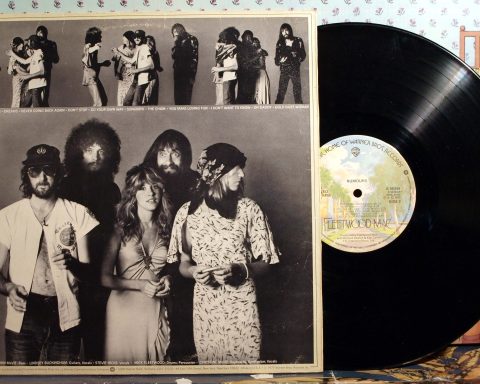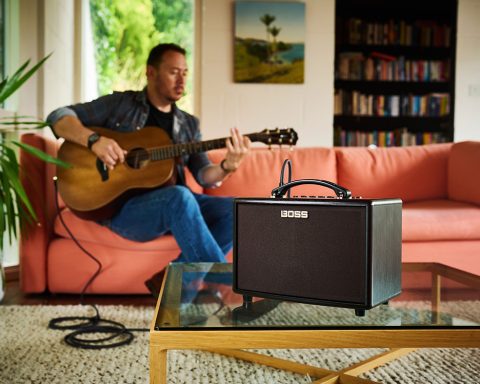There are many different bass guitar amps applications. Yet the best bass amps provide the ability to record, practice, and play live. Players need an amp that can handle every scenario—from diverse live venues to unique recording studios. Let’s look at different bass amp applications and what bassists need for each environment. Throughout, we’ll use the Katana Bass as an example of an amp that can do it all.
Gigging with a Bass Amplifier
Let’s begin with what players need in a gigging bass amplifier. Playing live shows in the most common bass guitar amp application. What are the essentials when looking for a live gigging bass guitar amp? We’ve rounded up some of the key features of a gigging bass guitar amp.
- Class AB power amp
- Balanced line out
- Blend function
- Reliability

Class AB Power Amps
Class A amplifiers were invented for tube amps. However, they ran hot, and the power supplies were impractical. While there were tonal benefits, they were unreliable due to the immense amount of power they needed to run. Class B amplifiers improved that efficiency by using less power.
Class AB amplifiers combine traits of Class A and Class B. This provides a more efficient bass amp than Class A amps with less distortion than Class B amps. Class AB amps bring out the dynamics in a bass player’s performance.
Most modern solid state amps use Class D amplification. They provide a reliable signal and more power. However, the clipping sound of a Class D amp can be unforgiving. In addition, the maximum volumes of most Class D amps are lower than one would expect from their high wattage. This makes it difficult to compare the loudness of Class D and AB amp simply by wattage.
"Class AB amplifiers combine Class A and Class B builds. They bring out the dynamics in a bass player's performance."
Class AB Benefits Live
Bass players don’t just want power from a Class D amp. They want the dynamics of their playing to come through and all the feel to remain intact. Unfortunately, Class D amps offer less of a dynamic range than their AB counterparts.
The Katana Bass uses a Class AB Power Amp allowing a richer, warmer, more dynamic sound experience. It not only responds to playing dynamics but is comparable in volume to much higher-powered Class D amplifiers. It’s the ultimate experience for playing live. All the feel and rich tone appear along with the reliability and volume of Class D.
A Balanced Line Out
There are numerous benefits to a balanced out in a live scenario. If a bass amp has an XLR balanced line out, players can hook up their amp to a PA via an XLR/microphone cable. This allows the bass signal to travel directly to the mixing board.
With a direct, pre, or post setting, one can send the signal directly to the mixing board before or after the EQ changes the sound. Direct sends the signal directly via DI to the board. There are two options. Pre is before the EQ section has changed the sound. Post is after the EQ changed how the amp sounds. Anything direct or pre-EQ is a flat signal. (Note: pre-EQ comes after compression.) Changes one makes on the amp won’t affect what the sound engineer receives.
The Katana Bass has a balanced out with selectable direct, pre, or post settings. This is useful for sending the amp signal to a PA system and retaining clarity before a mic changes how the amp sounds. Throw effects on and still get that heavy bass punch. In fact, try using the BOSS Tone Studio to tweak the low-pass filter for dry signal and high-pass filter for wet signal to really dial it in.
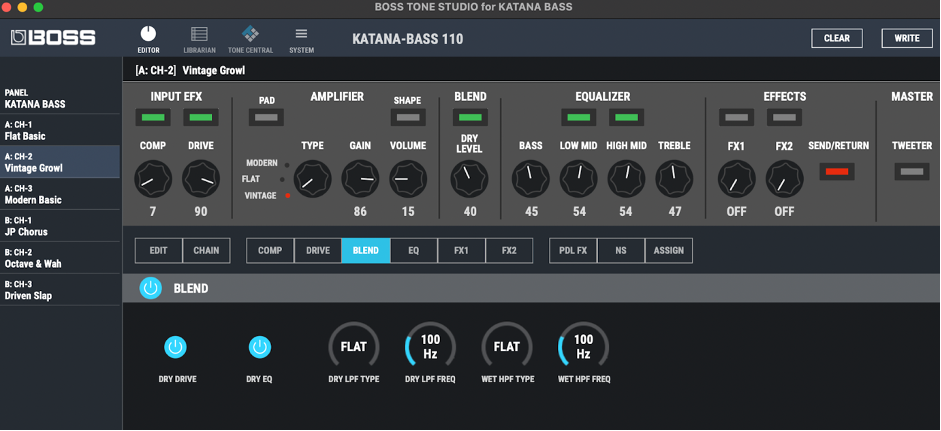
Using the Blend Function
When playing live, the sound engineer will send the sound to two places. These are the front of house (what the audience hears) and monitors for the musicians onstage. Sound engineers prefer to mix a purer bass signal. A Blend function mixes in the pure bass signal with the signal with effects. This results in a purer, punchier sound that retains the bass even with effects. The Katana Bass has this feature among many others. It’s easy to throw effects on a tone and maintain a heavy bass punch.
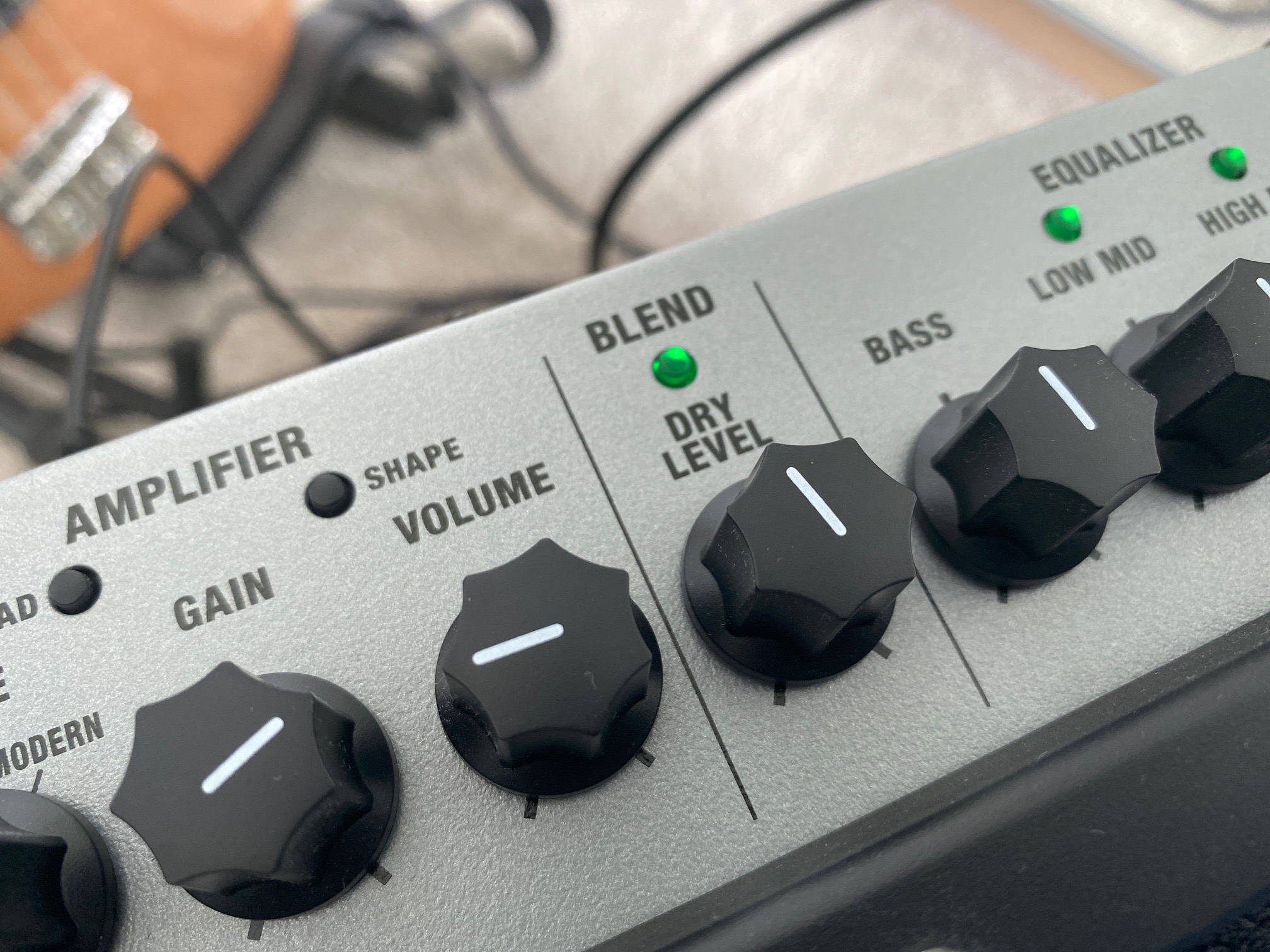
"The Katana Bass is a tank that sits back and lets players do their thing: pumping out serious low end."
Reliability Is Key
Every bass player needs an amplifier that isn’t going to let them down. One of the many benefits of the Katana Bass is its endless reliablility.
Thanks to the stage-ready analog Class AB design, Katana Bass provides everything from organic tube amp response and feel to a tight, modern sound by tuning the internal reactive drive circuit for each mode. At the same time, it has the dependability of a solid state amplifier. Other key features are the built-in effects and signal chain reliability. There are a plethora of effects to choose from within the Katana Bass. One can even chain four effects together on the unit and activate them with the GA-FC footswitch.
This only takes three cables: a guitar cable, a stereo cable from the amp to the GA-FC, and the XLR to the DI box. The Katana Bass is a tank that sits back and lets players do their thing: pumping out serious low end.
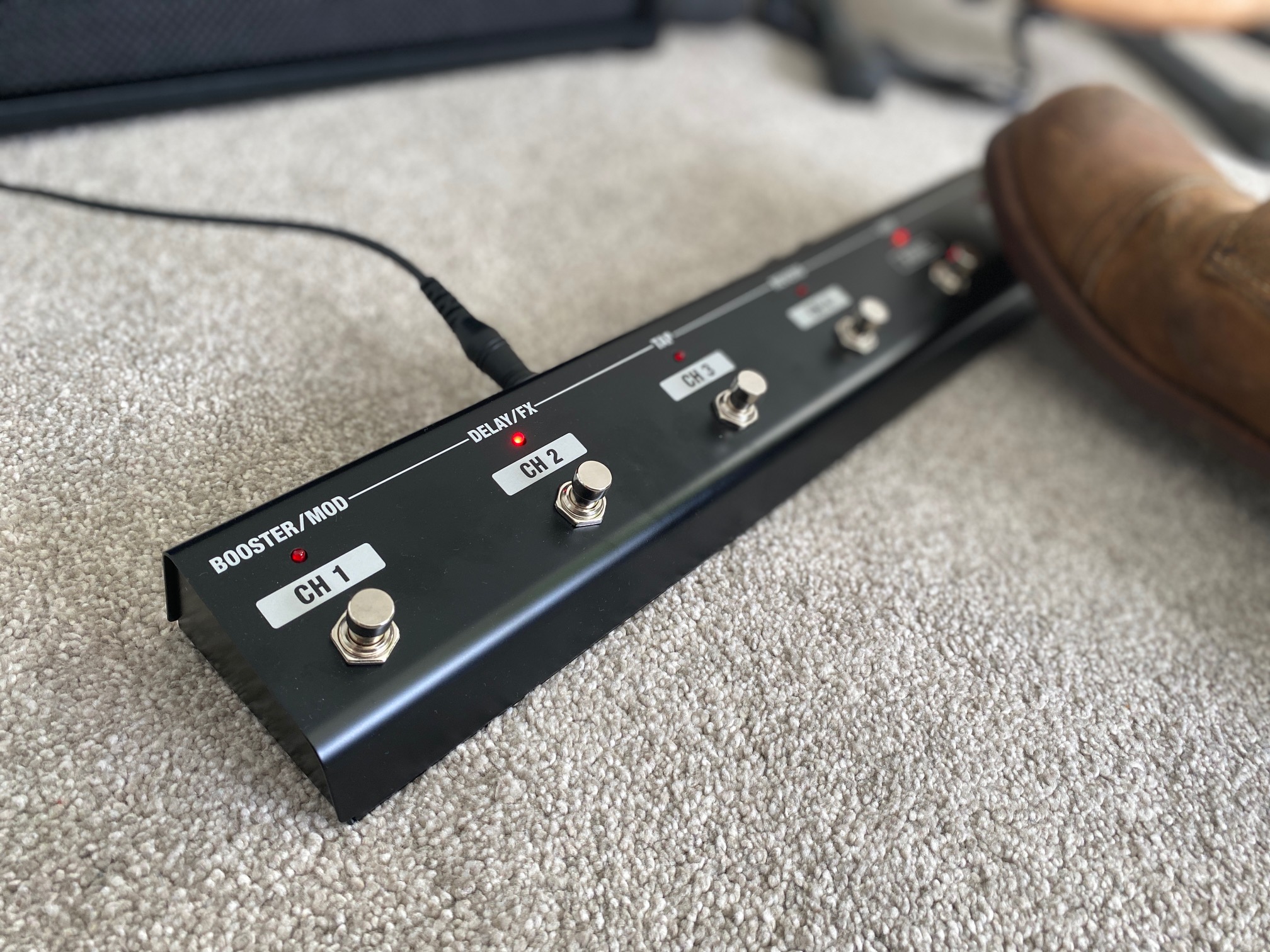
Practicing and Playing at Home
At home, bass players need a home-friendly bass amp that allows them to work on songs at a reasonable volume. The main benefits of the Katana Bass for practice scenarios come in the form of:
- Wattage attenuation and power control
- Headphones output
- Bluetooth® (with optional Audio MIDI Dual Adaptor)
- Aux In
Headphones Out
The headphones out allows bassists to play and listen without disturbing anyone. The Katana Bass has a Headphones/Rec Out. Plug headphones in and enjoy all the nuances of a mic’d up cab thanks to mic’d cabinet emulation.
Bluetooth
The Katana Bass has Bluetooth functionality, so players can jam along with music streamed from a phone or tablet. Bluetooth settings can be manipulated with the BOSS Tone Studio app.
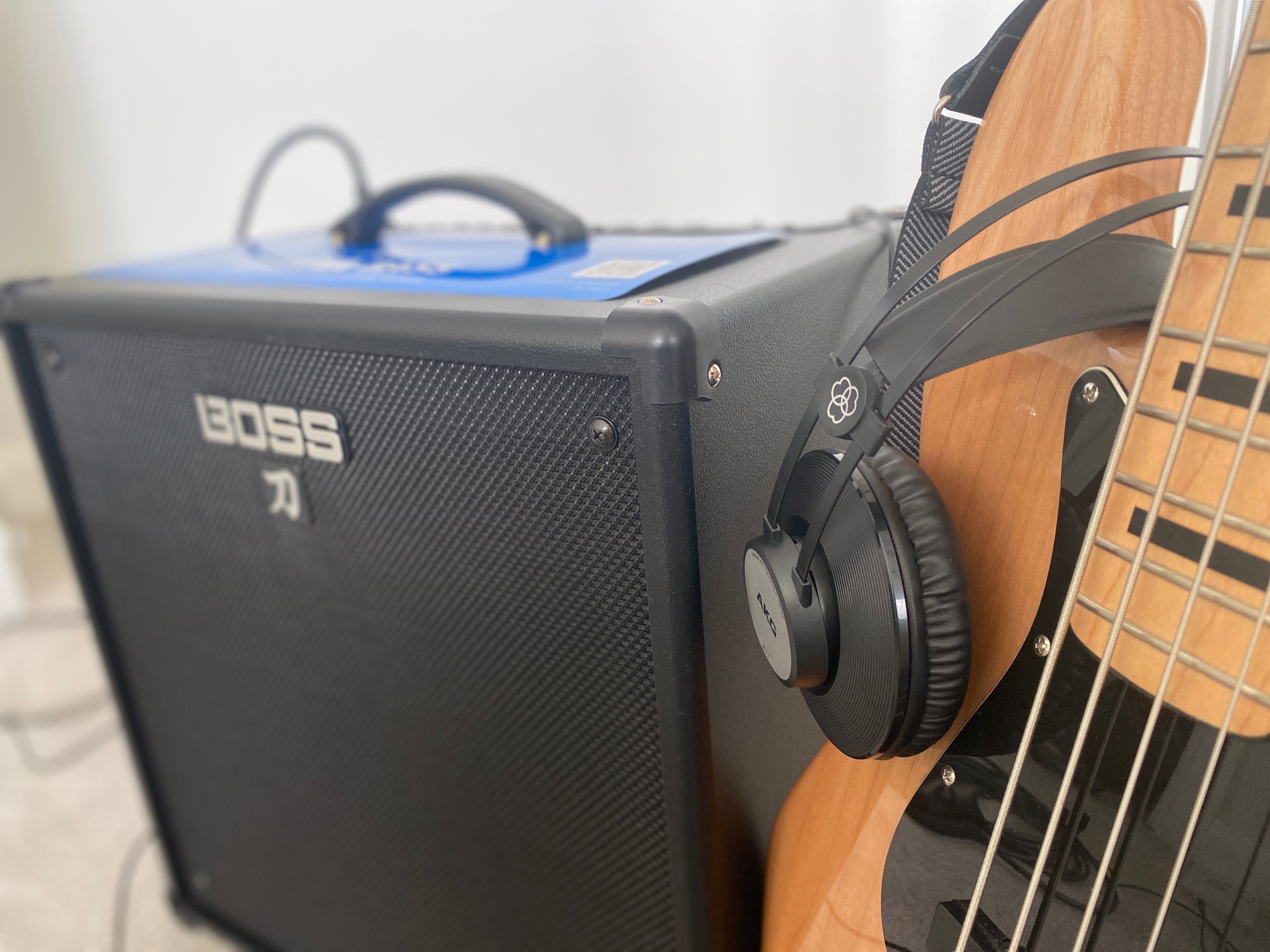
Wattage Attenuation and Power Control
The wattage attenuation and power control built into both the Katana-110 Bass and the Katana-210 Bass are also useful. This is especially the case when partnering it with the Vintage amp voicing. The Katana Bass series has a lush tone that emulates the classic tube voice complete with organic tone and natural drive when cranking an amp.
Still, with 110 watts in the Katana-110 Bass and 300 in the Katana-210 Bass, it’s hard to imagine turning these amps up at home. Fortunately, one doesn’t have to crank the Katana Bass to enjoy the dynamics of a tube amp at higher volumes. Simply set the amp to the 1-watt setting, and the amp will drop its power to a bedroom friendly 1 watt. This retains all the dynamics and nuances of an amp hitting tube saturation. It’s like playing an arena-level sound, but at your house.
"The Katana Bass series has a lush tone that emulates classic tubes, complete with the natural drive of cranking an amp."
Aux In
The aux in is great for plugging in an MP3 player and jamming along to a demo or favorite song. This is perfect for honing skills and learning from bass legends.

Recording Applications
Gone are the days when one could only get a solid bass recording by renting a studio for a week. Getting studio-quality bass recordings is easy to achieve with the right amp. Some features to look out for are:
- Range of outputs including USB
- Line Out with Air Feel
A Range of Outputs Including USB
All home studio enthusiasts who record demos at home without a microphone need outputs. Outputs such as a line out and a USB port will connect a bass guitar amp or DAW via a jack plug or USB. With an audio interface like the Roland Rubix series, plug the bass amp in via a ¼ inch jack plug. Without an audio interface, the best choice is to connect the amp to the computer via USB.
Having both options is an ideal scenario. One can record into an interface or straight to a DAW via USB. Katana Bass allows for both methods. The USB port allows for recording to a computer without an interface. Also, try downloading patches from BOSS TONE CENTRAL and importing them.
Line Out Air Feel
One of the downsides of recording with a line out is relying on the quality of the interface. If one is not recording a mic’d up cabinet, they’re missing out on the subtle nuances that mic’ing up a bass amp can provide. These include roominess or the punch of a close mic technique. Katana Bass solves both problems with the Line Out Air Feel feature.

The Line Out Air Feel found on BOSS Tone Studio applies to the sound of the BALANCED OUT (when set to POST), PHONES/REC OUT, and USB OUT. It provides the emulation of a mic’d-up cab at close range, far range, or a blend of both.
- REC: A room-mic’d sound for recording.
- LIVE: A close-mic’d sound for live.
- BLEND: A sound providing a good blend of close-mic’d and room-mic’d sound for live or recording.
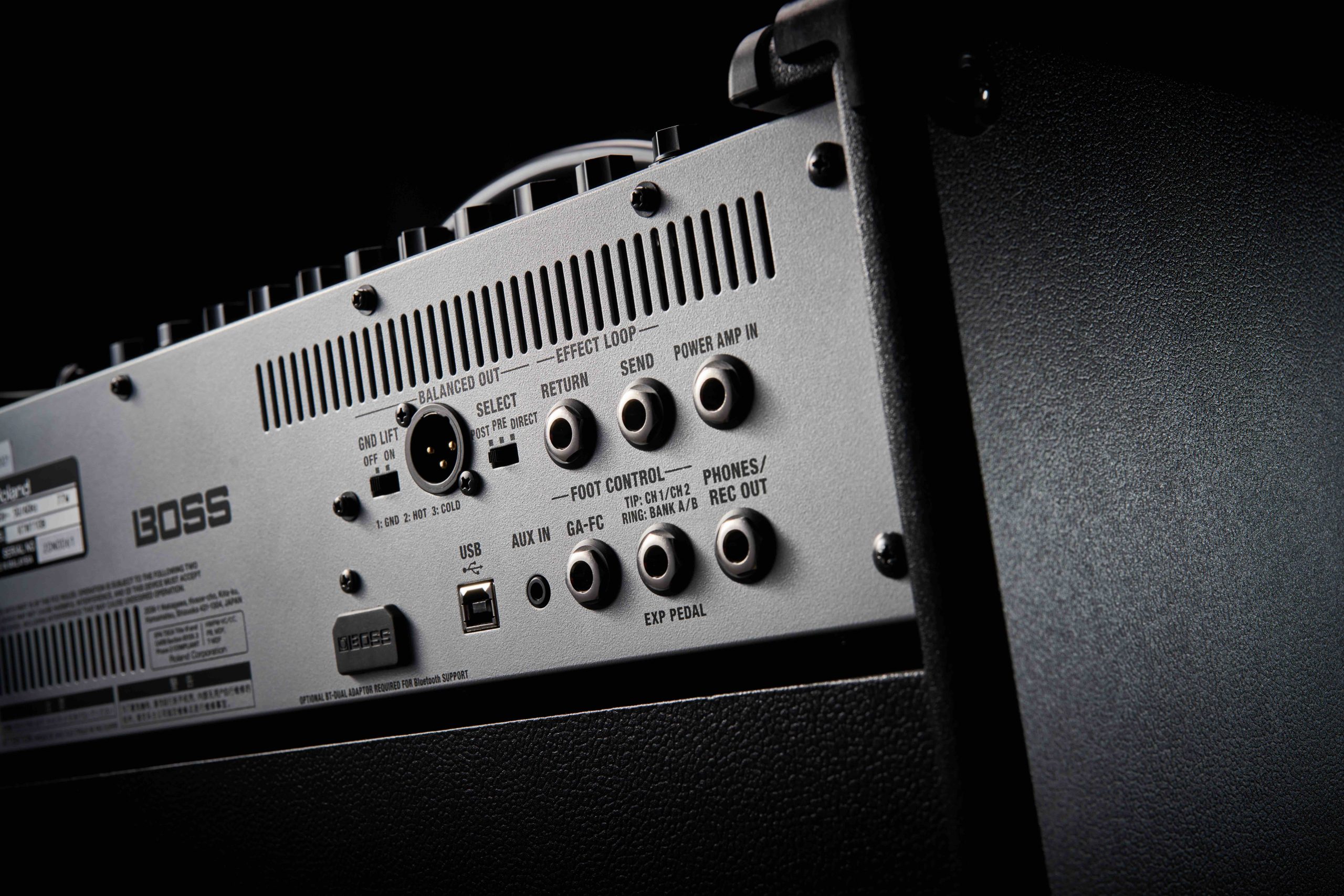
Compression
We’ve discussed the benefits of compression in “Order of Operation: A Guide to Bass Effects Signal Chain” and “A Beginner’s Guide to Bass Amps: Fundamental Sounds.”
Additionally, compression comes in handy when recording bass. Compression evens out each note. It makes the harsh notes quieter and the quieter notes louder. This creates an equal balance between each note and string, thus removing any dead spots.
This is especially useful with a vintage bass. It also helps when playing close to the neck where pickups struggle to recognize the lower notes. The Katana Bass has a range of built-in compression features to suit all styles. There are seven onboard compression options including BOSS Comp, Hi-band, Light, D-Comp, Orange, Fat, and Mild. It’s like having an entire studio’s worth of compressors to hand.
"Compression creates an equal balance between each note and string, thus removing any dead spots."

A Bass Amp for All Environments
Ultimately, bassists need an amplifier that can handle many environments. Whether teaching a child to play bass at home or headlining Glastonbury, the Katana Bass is ideal for any scenario.
Beginner or seasoned band veteran—the Katana Bass ticks the boxes for all applications. It also has a continuously updated patch library, reliable construction, and no-fuss interface. Like a sturdy BOSS stompbox, both the Katana-110 Bass and Katana-210 Bass provide all the sonic safety a player needs.



